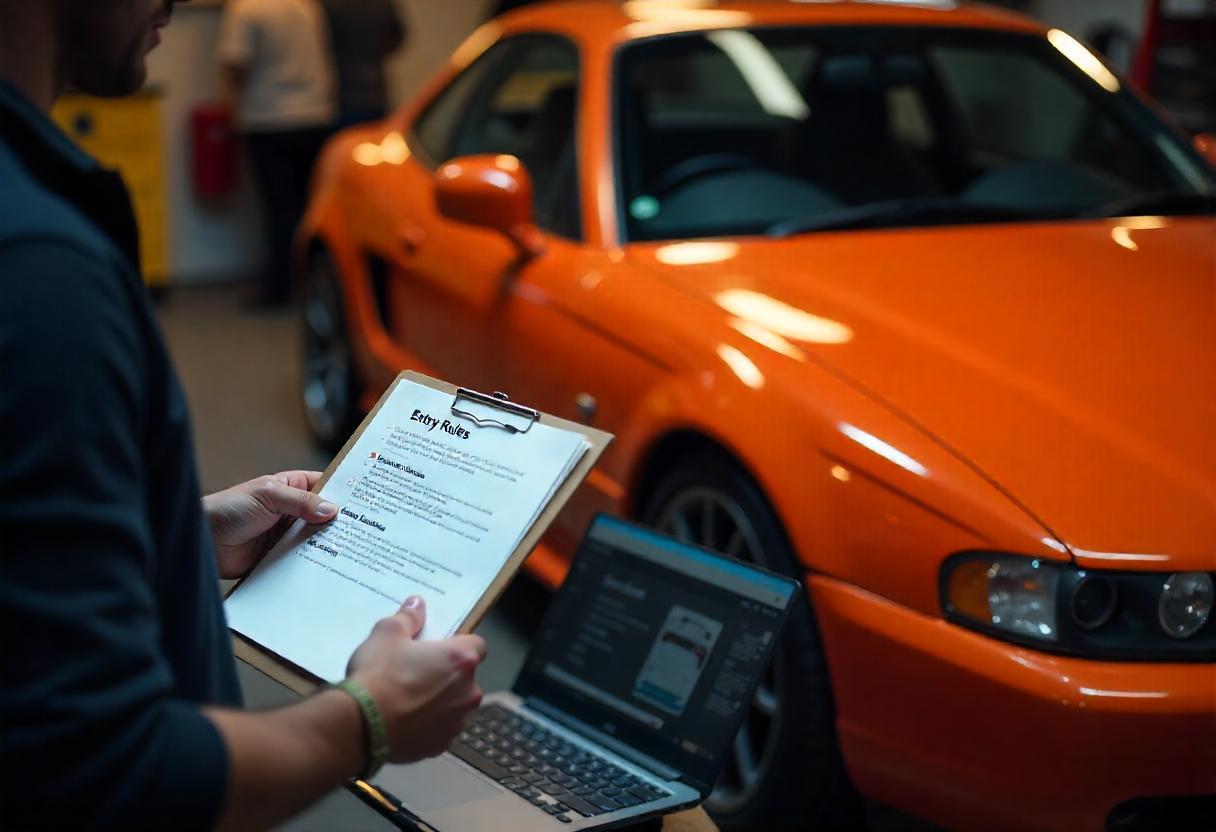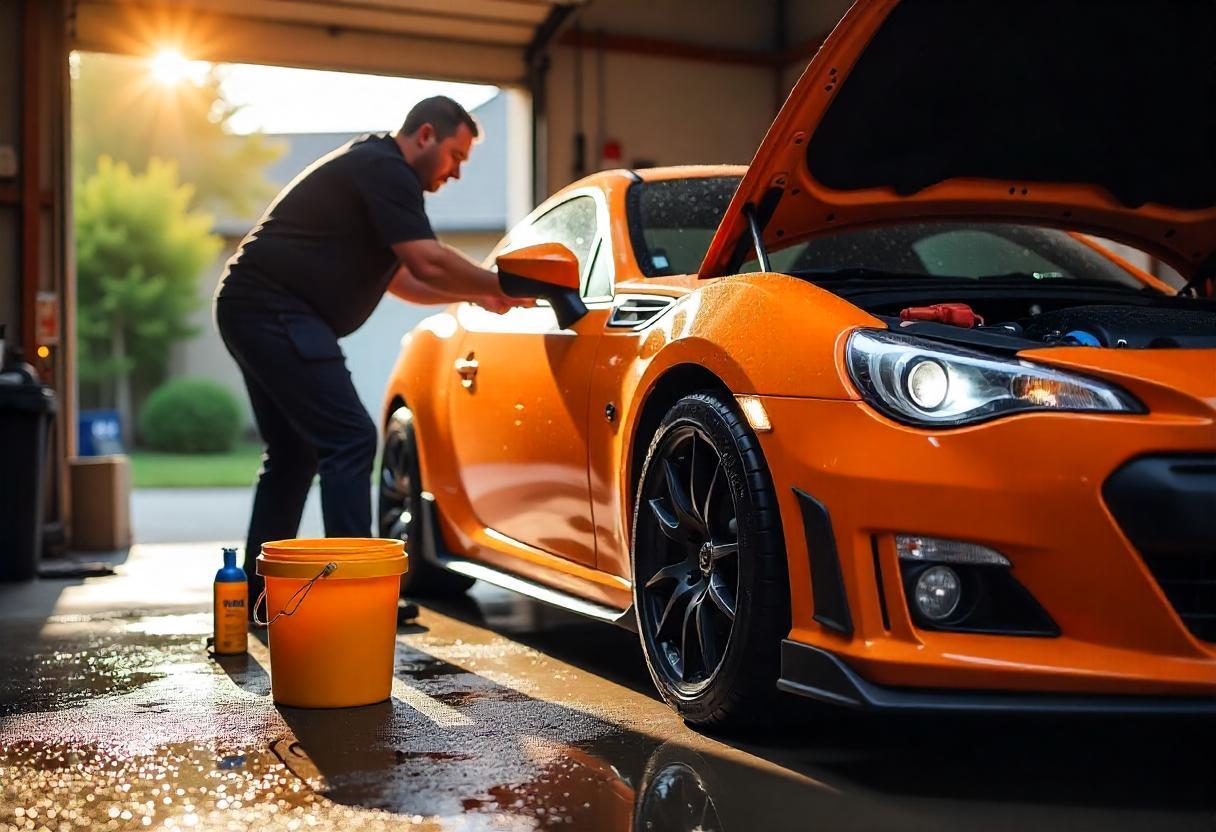Standing beside your pride and joy as people stop to admire it – that’s part of what makes car shows so appealing. For some, it’s the thrill of competition. For others, it’s about appreciation and sharing their vehicle’s story. Either way, getting your car in shape for its first appearance takes more than a quick polish and a full tank.
So, what you’ll find here is a no-nonsense guide that builds your confidence and gets your vehicle ready to show off – properly. Not just to impress others, but so you can enjoy the day too, start to finish.
1. Choose the Right Car Show

Not every car show suits every car. That might sound obvious, yet it’s easy to overlook when enthusiasm kicks in. So, before you register, check what sort of cars the event usually attracts.
If your car’s been modified, you’ll want somewhere that leans towards custom builds. Got a vintage or classic beauty? Go for a heritage show. The style, age and condition of your car should more or less match the show’s categories – that makes judging fairer and feedback more useful.
Also think about:
- Whether you want to compete or just display
- How far you’re willing to travel (and if accommodation is needed)
- Entry fees and what they include – parking, display space, or extras
- How the event is reviewed by past attendees
A bit of research saves a lot of faff later.
2. Understand the Event Requirements

Before you send in your entry, read through the event rules. Properly. Most organisers will include guidelines that cover things like:
- Entry deadlines, pass collection, and arrival times
- Vehicle condition requirements – no leaks, legal tyres, working lights
- Whether you need to bring proof of MOT or insurance
Some might even specify noise limits or emissions checks depending on location. And if you’re unsure about anything, don’t just guess – send them a message and double-check. Being caught out on the day for something small can knock your whole plan sideways.
Keep a digital folder with all your documents handy – saves printing loads out and losing half of them before breakfast.
3. Get Your Car Ready

This is where the work really starts, and frankly, most first-timers underestimate just how long it can take to prep properly. It’s not about hiding flaws – it’s about respect for the car and the event.
Start with a deep clean. That means:
- Washing and drying the bodywork, wheels, and tyres
- Cleaning inside the wheel arches and under the bonnet
- Hoovering the interior, treating leather or vinyl, and polishing trim
- Buffing out scratches and bringing dull paint back to life if needed
Then run a few function checks. Make sure the lights work, the indicators flash, windows operate, and nothing's rattling when it shouldn't be. A quiet check the night before avoids a panicked fix in the car park.
Mini Show-Day Checklist:
- Cleaning kit (spray, cloths, tyre shine)
- Paint touch-up pen (if needed)
- Tyre pressure gauge
- Basic tool roll
- Spare bulbs or fuses
You might not need it all – but if you do, you'll be glad you packed it.
4. Check Your Number Plates
An easy thing to overlook – until it costs you points with judges, or worse, gets you sent off-site.
First, check that your plates match your V5 and are fully road-legal if you're arriving on public roads. Some shows allow “show plates” once you’re inside – things like custom fonts or colours – but you should always double-check their rules.
Dirty, faded, or cracked plates stand out – and not in a good way. If yours are past their best, you can build a fresh one using the plate builder at Demon Plates. Sorted in minutes, fitted in seconds.
5. Organise Your Presentation Materials
Let’s be honest – people love a bit of backstory. If you’ve restored the car yourself or added unique features, share that. A simple info board next to your car can make a big difference.
What to include:
- Vehicle make, model, year, and engine spec
- Before/after restoration photos (if relevant)
- A short story behind the car – why you bought it, what it means to you
- Awards, club membership, or unique facts
Display materials need to be neat, weatherproof, and secured in case of wind. Clear stands or laminated sheets work well. Keep it readable at a glance – no one’s reading an essay on a breezy Sunday afternoon.
6. Plan for the Day of the Show
Preparation doesn’t stop with the car. Packing the right gear keeps you comfortable and ready for anything the British weather throws at you.
Bring:
- Cleaning supplies for last-minute touch-ups
- Folding chairs and a lightweight shelter or brolly
- Snacks, drinks, and spare layers
- Hand sanitiser and wipes
- Phone charger or battery pack
Try to arrive early. It’s easier to pick your spot, you’ll set up with less stress, and you’ve got more time to settle in and enjoy yourself. Check where to park, how to check in, and have your ID, passes, and documents ready to flash.
7. Engage With the Audience
One of the best parts of the day is the chat. Whether someone’s a fellow enthusiast or just curious, sharing stories can be surprisingly rewarding.
So, when someone stops to look:
- Be friendly – say hello, smile, and invite questions
- Share details in plain terms unless someone asks for the tech stuff
- Never talk down another exhibitor’s car – it puts people off
You’ll meet all sorts. Some are veterans, others are wide-eyed beginners. Treat everyone like they’ve got something to offer, and you’ll walk away with new friends, ideas, and probably a few compliments too.
So, the secret’s out – preparing for a car show isn’t rocket science, but it does take time, thought, and a bit of elbow grease. What really matters, though, is enjoying the experience and learning a little more each time.
Start small if you need to. Go along as a guest, soak it up, and chat to exhibitors. Then, when you're ready, you’ll know exactly what to expect – and more importantly, how to make the most of it.
